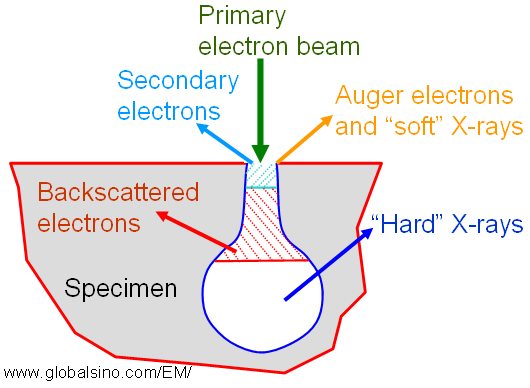=================================================================================
In EDS analysis, some are very "soft" (low energy) X-rays such
as those produced by excited oxygen atoms.
Figure 4647 shows the escape depths of various species generated by high-energy electrons penetrating into a solid. Auger electrons and "soft" X-rays are emitted in depth of <1 nm and in diameter of beam size, secondary electrons are emitted in depth of < 10 nm and in diameter of beam size, and the emission depths and diameters of backscattered electrons and "hard" X-rays depend on both the beam energy and beam size.

Figure 4647. Escape depths of various species generated by high-energy electrons penetrating into a solid.
In comparison between the emissions of Auger electrons and “soft” X-rays, for electron irradiation of high atomic-number (Z) elements, Auger electron emission predominates, while for irradiation of low Z elements, “soft” X-rays predominate.
|
